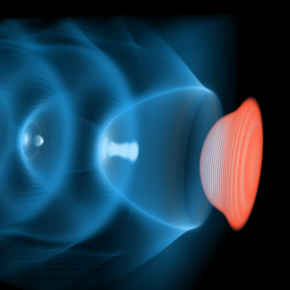
The EuPRAXIA consortium wants to build in Europe the first research infrastructure based on an electron accelerator using plasma wave technology. After 4 years of work, a feasibility study, to which IJCLab strongly contributed, was submitted to the European Commission and was recently the subject of a publication in the European Physical Journal Special Topics.
EuPRAXIA (European Plasma Research Accelerator with eXcellence In Applications) was born in 2015 and brings together 41 laboratories in Europe, America and Asia, to define a future research infrastructure using a plasma accelerator. This new type of instrument has the potential to produce accelerating electric fields up to 1000 times stronger than those of conventional "radio-frequency" accelerators, thus taking up much less space. The electron energy range envisaged by EuPRAXIA, from 1 to 5 GeV, and the beam quality objectives should allow the infrastructure to be used for a variety of applications in several scientific fields. This includes, for example, the study of materials, bacteria or viruses, using the X-rays generated by the installation.
In France, engineers and researchers from IJCLab and LLR have contributed to project management, design studies for electron diagnostics and laser-plasma simulations using the open-source code SMILEI. These teams are continuing their work on the modeling / simulation aspects of the laser-plasma acceleration phenomenon, but also through exploratory experiments carried out at the APOLLON laser installation as well as on technological developments with the PALLAS project (Plasma Laser Accelerator Prototype) at IJCLab.
EuPRAXIA has applied to integrate the ESFRI process for European research infrastructures, with the support of five European countries. The decision should be known in late spring or summer 2021.
To know more: European Physical Journal Special Topics.





